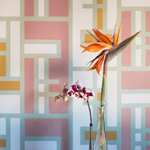
What is green design?
Green design is the creation of infrastructures which are considered to be energy efficient and environmental friendly. This means that the green design should have minimal impact to the environment by using materials that are eco-friendly and methodologies that cannot harm the surroundings. Achieving these without sacrificing the quality and functionality of any infrastructure.
We are all aware that the environment has a global problem. Air, land, and water on earth are facing serious problems and these can be blamed to all of us. Pollution is a result of human activities. It is safe to say that as long as there are human activities, we will always be producing pollutants that are definitely harmful to the environment and to the human health. Many interventions have been done and are currently being done to save the planet. Who else would save the planet if not us?
The green design should always be concerned with the environmental-friendly outcomes of the whole life cycle of the infrastructure. Impact to the environment should always be considered in planning to construct the building. A sustainable design is the ability of the building to adjust to the changes as time goes by.
Green Design, a Historical Perspective
Withe the rising concerns of many environmentalists and their respective groups or associations, several proposals and principles were drawn on how to help in preserving the planet. We consider the planet as one big organism that when something happens to one of its part, the whole is likewise affected. As such, if the problem is about air pollution, then the whole planet is in danger which includes the other components of the biosphere. Humans were agreed to be the stewards of the planet and that all individuals, regardless of profession and race should take part in fulfilling this mission. With the fast paced depletion of the Earth’s non renewable resources such as fossil fuels, proposals have been made to convert renewable sources of energy into useful and consumable energy. For instance, geothermal energy and solar energy should be utilized into something that is useful to the daily lives of humans.
During mid 1980s until the 1990s, the number of environmental advocacy groups grew. Groups such as Greenpeace, The Sierra Club, Friends of the Earth and the Nature Conservancy, to name a few. For architects and others involved in the field of building, one of the major accomplishments was the formulation of the Leadership in energy and Environmental Design (LEED) in 1994. Standards were established by the U.S. Green Building Council and these standards gave the criteria for the design and construction of environmental friendly buildings.
During this period, more groups became interested in the environmental movement. Group of more socially responsive and philosophically oriented green architects rose to prominence and made legacy in the advocacy. Prominent architects and other individuals who are advocating the environmental movement were able to come up with research outputs and were compiled into a database or environmental construction methods sustainable materials.
The Goal of the Green Design
Since the condition of the planet is getting worse, green design experts have created a database of research projects all focusing on the sustainable development in the field of building and architecture. In general, the goal of the green design can be summarized in three principles:
1. Alternative energy resources – building of homes and communities that can produce their own supply of power with the use of alternative sources of energy such as solar and wind.
2. Energy conservation – the use of materials that would be able to save energy and money in the building. For instance, insulating materials that do not cause indoor humidity problems and the loss of warm and cool air.
3. Reuse of materials – the use of recyclable building materials. Materials can be obtained from demolition sites.
4. Careful siting – the possibility of using underground or earth-sheltered architecture which is ideal for domestic living. The earth can be a source of climate control.
Although these principles cannot alone solve the problems of the planet, they can vastly contribute to the sustainable development of Earth. The success of the movement greatly depends on the social, psychological, and aesthetic appeal yet still using the advancement in technology.
Professionals in the building and architecture field are then challenged to learn from the lessons of environmental science and technology and apply the principles to come up with environmental friendly infrastructures. Who knows, these principles of green design may be the key in saving the planet. Then all of us will be called heroes for saving the dying planet Earth.




